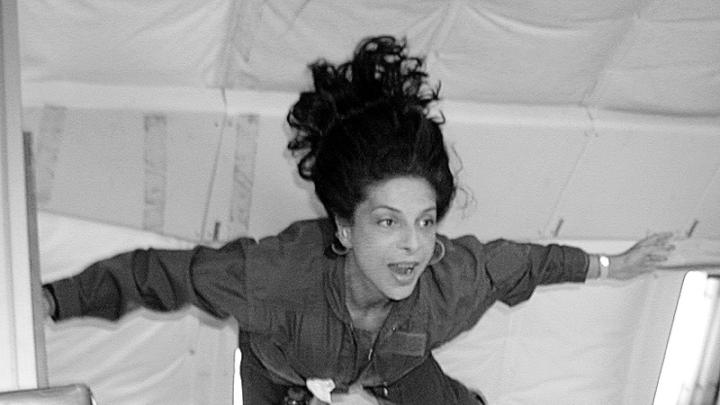Constance Adams ’86 was interviewing for a job in Houston in 1995 when she decided to visit NASA’s Johnson Space Center. “We were touring the site,” she remembers, “and a calm voice was explaining that one day, we would be going to Mars. Of course I sent in my résumé for a job opening.” A year later, she got a call. “We need someone to work prototype surface habitat for Mars. Are you still interested?” After earning a master’s in architecture at Yale, and five years of designing buildings and city planning in Berlin and Tokyo, the offer seemed like a step in an even more exciting direction: “How could I not want to design for space?”
As a space architect, Adams’s work involves finding creative solutions for extreme problems. When designing BIO-Plex, a surface habitation for Mars, she worked with miniaturized adult versions of edible plants that would provide nutrients and process waste for the astronauts on board. “I consider plants similar to any of the other systems that I work with--I know enough to accommodate them in the design, but I also need to have experts working with me,” she says. She has designed other habitations for Mars, and has participated in the design of several space shuttles.
Space projects have important implications for earth life. Dealing with “closed-loop” systems means figuring out how to recycle and reuse in tight situations, Adams explains. Waste, for example, can have important implications in space: carrying one kilo, the weight of one liter of water, to the International Space Station costs $50,000, she says, so an effective design must shed as many pounds as possible. Such constraints have helped Adams and her colleagues bring new ideas to this planet; “NASA has made enormous strides in sustainability,” she says. She is currently working on a countertop water-cleaning system that operates on many of the same principles as the BIO-Plex.
Adams has also helped the field of space architecture grow during the past two decades. In 2000, she participated in drafting a charter that outlined the goals and guidelines of the practice, and in 2005, she was honored as a National Geographic Emerging Explorer for her work. She is now working on a book of design principles for future space architects. Here, she says, her background as a social-studies concentrator comes into play, “primarily because what we are doing is inventing a profession, or rather restructuring a profession around larger, older principles. To develop architecture around rocket science requires a sense of history, sociology, economics, science and philosophy that informs one’s aesthetic and operational decisions at every step.” Today, she is the president of Synthesis International, a technical consulting firm made up of both architects and engineers. The firm works with NASA and other companies to develop a range of projects--from Mars exploration vehicles to a hospital bed that supports the body’s pressure points.
And whether working at NASA or privately, she has held on to one main criterion to make sure her work is good. “A thorough, encyclopedic understanding of science fiction help one to judge ideas,” she says. “An idea that has some game has been dealt with in science fiction.”








